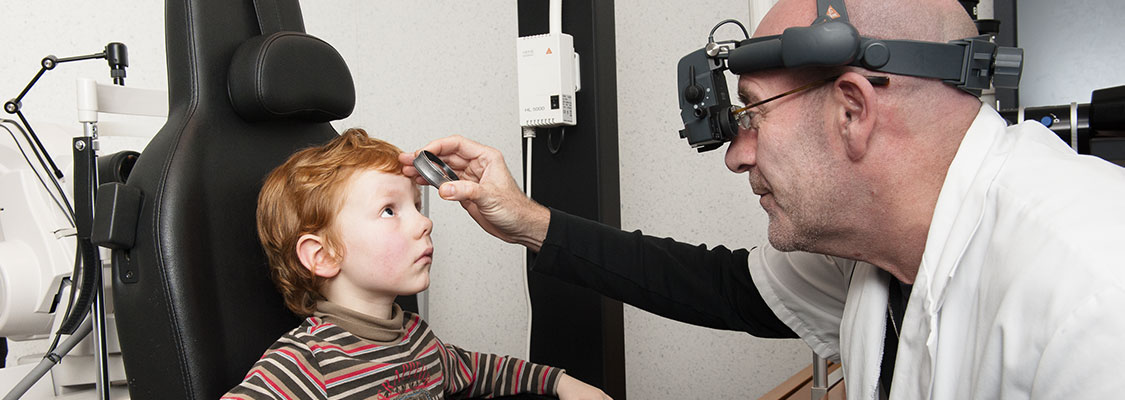Eye Cancer

The Ophthalmology Department at the Cliniques universitaires Saint-Luc is recognised throughout Europe for its expertise and excellence in the management of eye cancer and retinoblastoma in particular.
Retinoblastoma is the most common malignant intraocular tumour found in children, with an average age of 18 months at the time of diagnosis. In most cases, the treatment for retinoblastoma is the removal of the affected eye (enucleation). At the Cliniques universitaires Saint-Luc, however, when there is hope to save the affected eye and the survival of the child can be guaranteed, the team will initiate a conservatory treatment of the affected eye. His expertise is internationally recognised and half of the young patients with retinoblastoma and treated in the Ocular Oncology Unit come from abroad (the Balkans, Eastern Europe, Algeria, etc).
A long treatment
To avoid enucleation whenever possible, the conservatory treatment for retinoblastoma starts with a systemic chemotherapy in collaboration with the paediatric Hemato-oncology team led by Professor Bénédicte Brichard. Once the volume of the intraocular tumour is reduced targeted ocular treatments (cryotherapy, transpupillar thermotherapy, radiotherapy with radioactive plaques) can be considered on the tumour residue after 6 cycles of chemotherapy. The child is carefully monitored throughout the treatment mainly until the age of three. “We see each child every 3-4 weeks during a short examination under general anaesthesia in order to document their intraocular therapeutic response and immediately apply targeted ocular treatments to the tumour scar resulting from chemotherapy” . “As a general rule, after the age of three the children can be examined without general anaesthesia.”
Multidisciplinary management of cancer is one of the specialities of the Cliniques universitaires Saint-Luc. “We work in close collaboration with all the specialists who may be called upon to help in the treatment of cancer: radiotherapists, paediatric oncologists, nuclear physicists, ocularists etc. This is our strength: offering patients multidisciplinary care in one place!”
Timescale and case selection
Saint-Luc offers other advantages in the treatment of retinoblastoma:
- Treatment seems to be less expensive than in other European centres for ocular cancer.
- The delay for the first consultation in case of retinoblastoma and starting therapy is short (usually less than one week if there is no delay in obtaining the visa).
For this to happen, it is essential to send the child’s medical records (description of ocular lesions, medical imaging, etc.). But the decision regarding the treatment can however only be made after examining the child.
Ocular melanoma
The Ocular Oncology Unit at the Cliniques universitaires Saint-Luc also treats ocular melanoma, the most common malignant tumour in adults. In the majority of cases, intraocular melanomas (of the uvea) are treated by contact radiotherapy with iodine 125 radioactive plaques. This technique involves surgically placing a radioactive plaque on the surface of the ocular globe, custom made to target the tumour, and to irradiate it. Our experience confirms a therapeutical success in over 98% of cases, permitting team to avoid enucleation in more than 90% of patients.
More information (for the time being only in French) : www.saintluc.be
